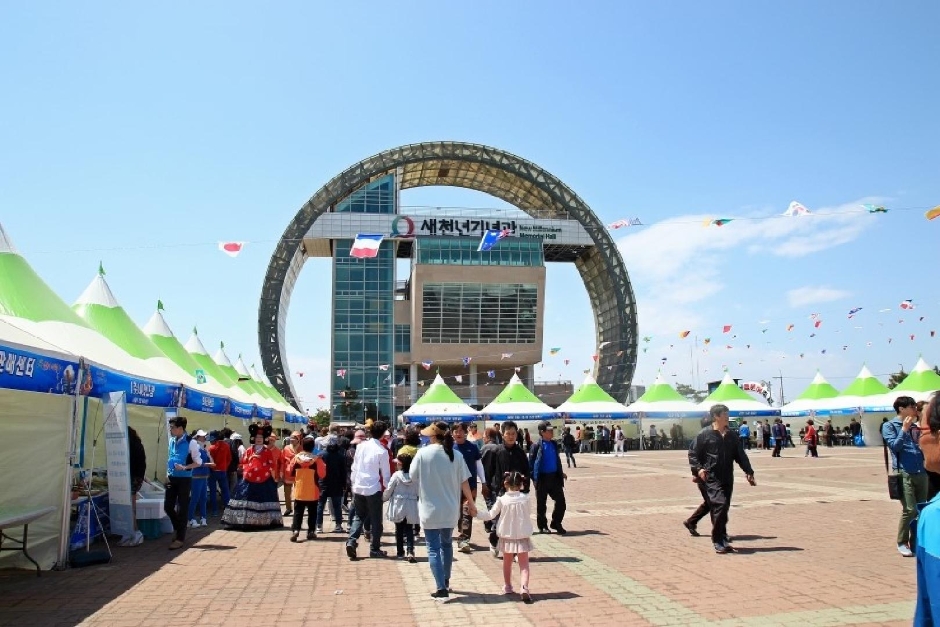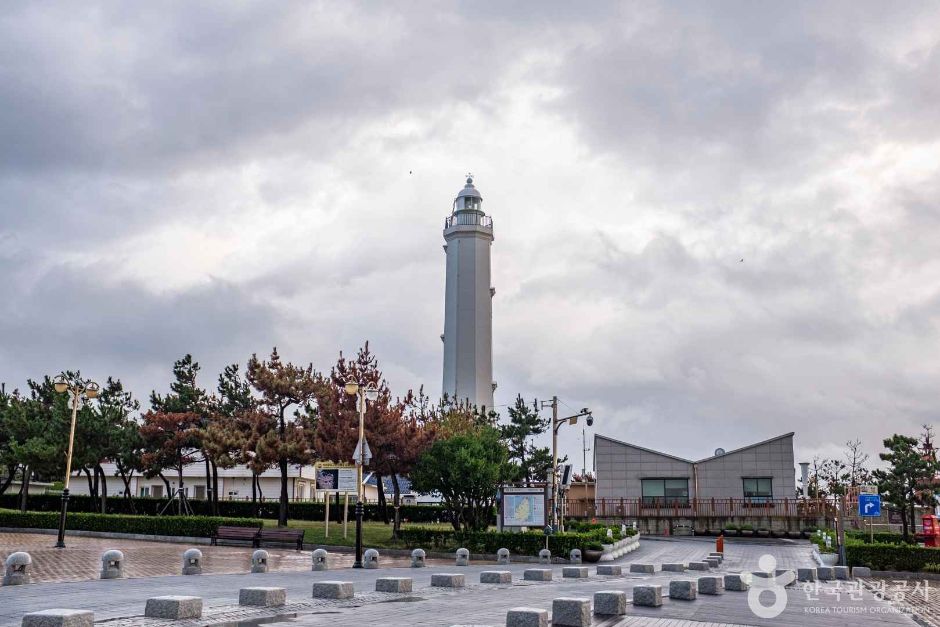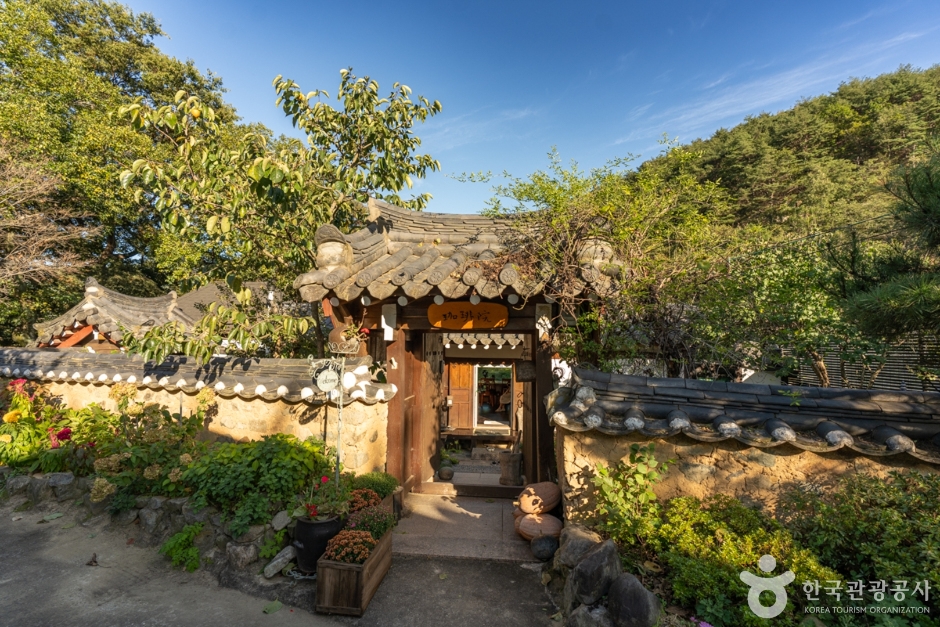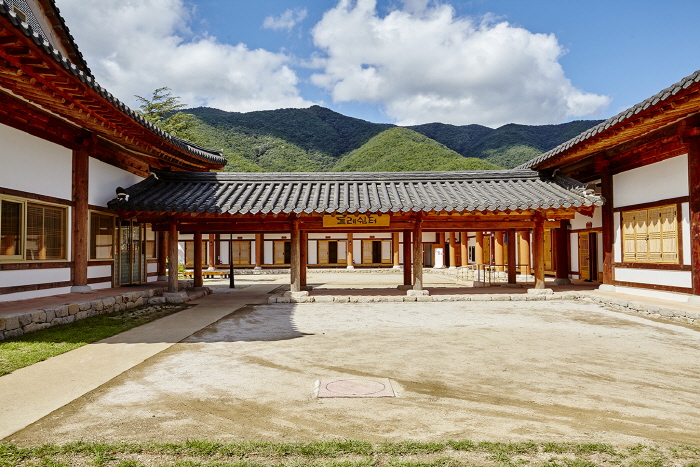Homigot Octopus Festival (호미곶 돌문어 수산물 축제)
17.9Km 2025-05-20
136 Haemaji-ro, Homigot-myeon, Nam-gu, Pohang-si, Gyeongsangbuk-do
+82-54-284-0575
The Homigot Octopus Festival is an annual festival held to celebrate the octopus harvested from the rocky coastal area around Homigot Peninsula. The octopus here are known for their chewy texture and high-quality taste. During the festival, visitors can enjoy freshly caught octopus from the East Sea, as well as take pictures in a vast field of canola flowers that bloom near the coast. Additional programs and experiences related to octopus are planned for the enjoyment of all.
Homigot Sunrise Square (호미곶 해맞이광장)
17.9Km 2025-07-21
20 Haemaji-ro 150beon-gil, Nam-gu, Pohang-si, Gyeongsangbuk-do
+82-54-270-5855
Homigot is located at the easternmost end of the Korean peninsula, in what would be considered to be the tail, if thinking of the Korean peninsula as a tiger. When Kim Jeongho made the Daedongyeojido Map, he visited this place seven times to confirm this area is in fact the easternmost part of Korea. Following the resources of Korea Astronomy and Space Science Institute, the sunrise time of Homigot on January 1 is at 7:32 am, making it the earliest first sunrise of each year in Korea. The plaza was built to commemorate these research findings with the national Sunrise Festival. Nearby attractions include Korea's largest lighthouse, Homigot Lighthouse, established in 1908; Lighthouse Museum; Monument to Commemorate Lee Yuk-sa’s Patriotism; and Daebo Seawater Bath, using pure seawater of the East Sea.
When completed, Homigot Tourism Complex and Homigot Specialized Ocean Leisure Complex will be the largest tourism complex in the eastern coast district. It will include an ocean aquarium, Ocean Ecological Park, Youth Training facilities, beach dome, accommodation facilities, and other various stores as well.
Sangsaeng’s Hand, a two-part bronze sculpture shaped like a pair of hands, was constructed in December 1999. It is a signature symbol of the sunrise festival. The left hand is on the land and the right hand is in the ocean. It was built to give the message that all people are living together by helping one another like Sangsaeng, meaning coexistence in Korean. The base of the platform is an image of the sun and its two round rings refer to harmony. These two hands have memorial sprits of reconciliation and coexistence for celebrating a new millennium.
Homigot Lighthouse (호미곶 등대)
17.9Km 2025-01-21
20 Haemaji-ro 150beon-gil, Nam-gu, Pohang-si, Gyeongsangbuk-do
+82-54-284-9814
Homigot Lighthouse is located at Homigot Cape, listed as one of the 10 most scenic sites during the Joseon dynasty. It was the tallest lighthouse in Korea at the time of its opening on December 20, 1908. The octagonal, six-story building is 26.4 meters high, with a base circumference of 24 meters. It was built using red bricks and no reinforcing rods, designed in the 18th century renaissance style, with gable decorations over the entrance and windows. The ceiling on each floor is sculpted in the shape of pear blossoms, a symbol of the Joseon royalty, while the number of stairs totals to 108, reflective of Buddhist culture.
National Lighthouse Museum (국립등대박물관)
17.9Km 2025-02-04
20 Haemaji-ro 150beon-gil, Homigot-myeon, Nam-gu, Pohang-si, Gyeongsangbuk-do
The National Lighthouse Museum, located in Homigot Cape, showcases the architecture, history, and artifacts of lighthouses. It features exhibition halls, an experience zone, and a café with ocean views. The outdoor exhibit includes the iconic Homigot Lighthouse. Visitors can enjoy hands-on activities like building lighthouses with blocks, aquarium experiences, puzzle assembly, and crafting their own lighthouses. Family-friendly programs include 2-day lighthouse trips and engaging educational activities designed to teach young children about navigational markers through play.
Homibando Peninsula Coastal Trail (호미반도 해안둘레길)
18.1Km 2024-02-13
360 Ibam-ri, Donghae-myeon, Nam-gu, Pohang-si, Gyeongsangbuk-do
The Homibando Peninsula Coastal Trail is a picturesque trekking route that spans a remarkable 58 kilometers of Pohang's coastline, stretching from Donghae-myeon to Janggi-myeon via Guryongpo-eup and Homigot Cape. This easternmost section of the Korean Peninsula offers an opportunity to marvel at rugged cliffs and savor the soothing sounds of crashing waves as you stroll along the shoreline. The trail is divided into four distinct courses, with the third course, known as Guryongso-gil, being the lengthiest, taking approximately two hours to complete. It begins at Janggun Rock, winding its way through the Golden Rain Tree and Black Jetbead colonies, ultimately concluding at Guryongso. On the other hand, the fourth course, Homi-gil, is the shortest and starts at Eagle Rock, concluding at the picturesque Homigot Sunrise Square.
Robo Life Museum (로보라이프 뮤지엄)
18.2Km 2021-03-10
39, Jigok-ro, Nam-gu, Pohang-si, Gyeongsangbuk-do
054-279-0427
The Robo Life Museum is a place where one can meet robots that are already part of our daily lives, knowingly and unknowingly. Visitors can learn about robots while dancing and drawing with them as well as touching and operating them. Through the museum, visitors can experience what the future will be like. It also is an ideal place for kids to satisfy their curiosity and have fun.
PARK 1538 (POSCO Museum) (Park1538 포스코역사박물관)
18.6Km 2025-10-23
14 Donghaean-ro 6213beon-gil, Nam-gu, Pohang-si, Gyeongsangbuk-do
The PARK 1538 POSCO Museum not only showcases the history, spirit, corporate culture and vision of POSCO, but also Pohang city's development, showing the city's transformation alongside the company. POSCO was able to achieve success thanks to the POSCO employees who fought against all kinds of adversities. The museum showcases such great achievements, as well as the entire history of the company, giving dreams and hopes to the youth who visit the museum.
Gabaewon (가배원)
18.9Km 2024-02-21
12-2 Deokdongmunhwa-gil, Gibuk-myeon, Buk-gu, Pohang-si, Gyeongsangbuk-do
Gabaewon is a café located in Deokdong Village, renowned for its exceptional omija cha (omija tea). This tea is crafted from handmade omija preserves, aged for five years, resulting in a rich and deep flavor. Additionally, the café features hongcha (black tea) made from leaves sourced from Yunnan, China, as well as saenggang cha (ginger tea). It's an ideal place to savor a cup of tea amidst the cool breeze and fresh air of the forest.
Pohang Deokdong Culture Village (포항 덕동문화마을)
19.0Km 2024-02-13
210 Odeok-ri, Gibuk-myeon, Buk-gu, Pohang-si, Gyeongsangbuk-do
Pohang Deokdong Culture Village is a picturesque traditional village, renowned for its stunning natural beauty and impeccably preserved old houses. This village has its roots in the Imjin War era, when Jeong Munbu, a civil official of the Joseon dynasty, bestowed his wealth upon his grandson-in-law after returning to Jeonju at the war's conclusion. The village is home to significant cultural properties, including Aeeundang Old House and Saujeong Old House, Yonggyejeong Pavilion, and the Deokgyeseodang Village School. It also houses a Folk Museum, a repository of historical artifacts handed down through generations. The museum's collection includes items such as traditional banknotes, slave ownership papers, and gat (Korean traditional hats), offering a window into the rich cultural heritage and history of the village and its families.
Pohang Traditional Culture Center (포항전통문화체험관)
19.0Km 2025-01-07
7 , Deokdongmunhwa-gil, Buk-gu, Pohang-si, Gyeongsangbuk-do
+82-54-280-9371~3
The Pohang Traditional Culture Experience Center is in a quiet village in Deok-dong, 40 minutes from downtown Pohang. It’s a place for learning about traditional local culture while enjoying beautiful natural surroundings. Here you can experience seodang schooling, calligraphy, a tea ceremony, natural dyeing, taekkyeon martial art, Nanta drumming, straw crafts and paper making - not to mention making (and eating!) tofu and rice cakes. The affordable hanok rooms are ondol-heated, with shared toilet and shower room.





 English
English
 한국어
한국어 日本語
日本語 中文(简体)
中文(简体) Deutsch
Deutsch Français
Français Español
Español Русский
Русский